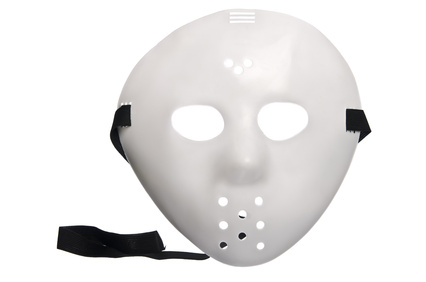
Do any of you remember “Jason” from the original Friday the 13th slasher/horror movies from the 1980’s? A group of teenagers are murdered one by one while attempting to reopen an abandoned campground.
Only Alice survived the terrifying night at Camp Crystal Lake and as morning came, she was on a small boat in the middle of the lake. All is calm and quiet, the birds are singing and she has no reason to be concerned.
But out of nowhere Jason leaps out of the water and grabs Alice and takes her down…but it was only a dream and a movie. No reason to fear and look for Jason any longer, right?
WRONG!
Do you realize that “JASON” is still out there and lurks around the corner of every clinical setting? Who is Jason? He is a metaphor for the worst possible/most likely complication your patient may experience. (See for yourself the ending on YouTube!)
As a practicing nurse, how did you establish care priorities and a plan of care? Though a traditional care plan with nursing priorities situated with NANDA “lite” (see last weeks blog) have relevance to the bedside, as a nurse with 30 years of experience in a wide variety of acute care settings, nurses also utilize alternative care planning strategies that are not readily taught in nursing textbooks, yet represent the essence of how a nurse thinks in practice.
One of these alternative care planning strategies is situating a plan of care by identifying and assessing for the development of the worst possible complication. This must also be taught to prepare students to think like a nurse!
In order to close the current practice/education gap, it is essential that commonly used approaches to establishing a plan of care besides NANDA be taught so that students are able to transition knowledge from academia to the bedside where it matters most!
Using “Jason” to Establish Care Priorities
Thinking like a nurse in practice is extremely complex and is much more than nursing process and 3-part NANDA statements. In addition to nursing process, the pillars of critical thinking, clinical reasoning, and recognizing clinical relationships of data so the clinical puzzle can be put together are needed and complement one another in clinical practice.
When these pillars are properly situated in academia, the nurse is able to apply knowledge, think in action and grasp the essence of every clinical situation. Once this foundation of nurse thinking is laid,alternative care planning strategies that include looking for “Jason” must also be utilized. This is also an example of situating clinical reasoning in a practical way so that students can integrate this into their practice.
Looking for “Jason”
Just as in the movies, Jason is still very deadly, but he has new names in the clinical setting that must be recognized by the nurse such as:
- Sepsis
- Septic shock
- Post-op bleed
- Respiratory distress
- Cardiac arrest
- Many others depending on your clinical practice setting!
Clinical vigilance is required to keep “Jason” from touching your patient and experiencing an adverse outcome. If student’s are intentionally looking for him, they will recognize the worst possible complication before it is too late.
It is only when the nurse has lost this sense of vigilance and forgets that “Jason” is still out there that complications go unnoticed until it is often too late. I have seen from my own clinical experience that any post-op patient is at risk for septic or hypovolemic shock; these are especially deadly when not recognized EARLY.
By making “Jason” a care planning priority tool, you will help student’s develop vigilance, which encourages PROACTIVE nursing practice and being one step ahead vs. REACTIVE and caught off guard and being one step behind.
For example sepsis is one of the most common “Jason’s” and hides early with subtle changes such as a low-grade temperature, slight hypotension, and tachycardia. When the nurse does not recognize the significance of these findings, the tachycardia will persist as Jason continues to have his way. It is only when Jason is RECOGNIZED, that his power to destroy is broken and your patient can be RESCUED from a likely adverse outcome.
Clinical Reasoning Step-by-Step
I have created a unique step-by-step template of 12 questions that break down the essence of clinical reasoning for students. (see my past blog “Don’t Play it Safe!”) This template of clinical reasoning questions can be used to replace the traditional care plan used in many programs because it situates both care planning, nursing process, and clinical reasoning!
6. What is the worst possible/most likely complication(s) to anticipate based on the primary problem?
7. What nursing assessments will identify this complication EARLY if it develops?
8. What nursing interventions will you initiate if this complication develops?
Download link from my site: Free Faculty Bundle (includes PDF of clinical reasoning template and several other clinical reasoning resources!)
The following questions taken together represent another way that students need to be taught to establish a plan of care. In order to rescue a patient from a deteriorating change of status, this possibility must be vigilantly looked for.
Identify the most common “Jason’s” in your clinical unit and expect your student’s to identify which “Jason” is most likely for their patient. EARLY signs and symptoms must be identified so that any complication is not allowed to needlessly progress.
In Closing
When the nurse fails to rescue a patient with a change of status it can possibly make the difference between life and death. Therefore, make sure that your student’s are sobered by the responsibility that they have to protect their patient from “Jason”. Bring your own goalie mask to clinical to remind each student that Jason is still out there, but his power can be broken and patient’s can be rescued by a thinking, vigilant nurse!
Comment Question:
Are your student’s aware that “Jason” is still out there? What creative strategies have you used to illustrate nurse vigilance?
Comment below and let the conversation begin!
Keith Rischer – PhD, RN, CEN
As a nurse with over 35 years of experience who remained in practice as an educator, I’ve witnessed the gap between how nursing is taught and how it is practiced, and I decided to do something about it! Read more…
The Ultimate Solution to Develop Clinical Judgment Skills
KeithRN’s Think Like a Nurse Membership
Access exclusive active learning resources for faculty and students, including KeithRN Case Studies, making it your go-to resource.



